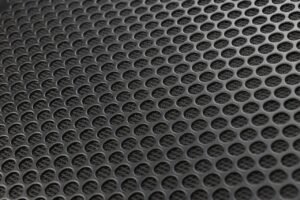Introduction Of Smartphone Loudspeaker:
In the dynamic landscape of smartphones, the evolution of technology is ceaseless, with every component contributing to the overall user experience. Among these components, the loudspeaker stands out as a silent hero, transforming the way we consume multimedia on our portable devices. This article aims to provide an in-depth exploration of the journey undertaken by smartphone loudspeakers, emphasizing the technological breakthroughs that have elevated them to become potent audio instruments.
The Early Days:
In the nascent stages of smartphone development, the primary focus was on basic functionalities like calling and texting. Consequently, the built-in loudspeakers were rudimentary, offering only basic audio output. The immersive and high-quality audio experiences we associate with modern smartphones were far from the reality of these early devices.
The Rise of Multimedia:
As smartphones evolved into multifunctional entertainment hubs, the demand for enhanced audio quality soared. Manufacturers recognized the need to prioritize loudspeaker technology to provide users with a richer and more immersive audio experience. This shift marked a pivotal moment in smartphone design, where audio capabilities became as important as other technological aspects.
Miniaturization Challenges:
The quest for sleeker and more compact smartphones posed a unique challenge for engineers working on loudspeaker technology. With limited space available, the integration of larger and more powerful speakers seemed impractical. Overcoming this obstacle required innovative thinking, pushing engineers to find ways to enhance audio quality within the ever-shrinking dimensions of modern smartphones.
Technological Advancements:
The evolution of smartphone loudspeakers is deeply intertwined with significant technological advancements. Advanced audio codecs, refined signal processing algorithms, and the integration of multiple speaker units have collectively contributed to the delivery of clearer, louder, and more detailed sound. These innovations have redefined the auditory landscape of smartphones.
Materials and Design:
Materials and design play a pivotal role in shaping the performance of smartphone loudspeakers. Engineers experiment with various materials for diaphragms and enclosures, aiming to achieve optimal sound reproduction. Additionally, the strategic placement of speakers within the device is meticulously considered to enhance stereo separation and create a more immersive audio environment.
Dolby Atmos and Surround Sound:
In recent years, smartphones have embraced technologies like Dolby Atmos, originally designed for theaters, to bring a cinematic audio experience to handheld devices. Dolby Atmos, adapted for smartphones, introduces a three-dimensional audio space, enhancing the perception of sound depth and directionality. This technology ensures users feel deeply immersed whether they are watching a movie, playing a game, or listening to music.
The Role of Software:
Software optimization has emerged as a critical factor in maximizing the potential of smartphone loudspeakers. Manufacturers invest heavily in developing advanced audio processing algorithms that dynamically adjust sound output based on the type of content being played. This ensures users consistently receive an optimal audio experience tailored to their specific activity, be it watching a movie, playing a game, or enjoying music.
Future Trends:
As smartphone technology continues its relentless advancement, the evolution of loudspeakers is poised to persist. Anticipated future trends include the integration of artificial intelligence (AI) for further audio processing enhancements, the utilization of flexible materials for speaker components, and advancements in haptic feedback to simulate the sensation of bass frequencies.
Conclusion:
The journey of smartphone loudspeakers from humble beginnings to sophisticated audio systems is nothing short of extraordinary. In an era where smartphones are indispensable for entertainment, the demand for high-quality audio experiences will fuel ongoing innovations in loudspeaker technology. The symphony in our pockets is set to become even more captivating, promising a sensory experience that aligns seamlessly with the ever-evolving capabilities of modern smartphones.
People Also Ask :
What is a loudspeaker in a smartphone?
A loudspeaker in a smartphone is a component responsible for producing sound, allowing users to hear audio during phone calls, watch videos, play music, and engage with various multimedia applications. It is a vital element that contributes to the overall audio experience on a mobile device.
Why did cell phones used to interfere with speakers?
In the past, cell phones occasionally caused interference with speakers due to electromagnetic interference. This interference occurred when the radio frequencies emitted by the phone interfered with unshielded speakers, leading to audible disturbances. Modern smartphones are designed with improved shielding to minimize such interference.
How do phone speakers break?
Phone speakers can break due to various reasons, including physical damage, exposure to moisture, manufacturing defects, or wear and tear over time. Dropping the phone, exposing it to water, or subjecting it to excessive pressure can lead to damage in the speaker components.
How do I fix my phone speakers?
Fixing phone speakers depends on the nature of the issue. Common solutions include checking for software issues, adjusting volume settings, and ensuring there is no debris blocking the speaker. If the problem persists, professional assistance may be required for physical repairs or component replacements.
Can water damage phone speakers?
Yes, water can damage phone speakers. When water enters the speaker components, it can affect the diaphragm’s movement, disrupt electrical connections, and lead to muffled or distorted sound. Swift action, such as drying the phone thoroughly or seeking professional assistance, is crucial to prevent long-term damage.
Is phone speaker repairable?
In many cases, phone speaker issues are repairable. Professional technicians can assess the extent of the damage, repair or replace faulty components, and restore the functionality of the speakers. However, severe damage may require more extensive repairs or speaker replacement.
Do phone speakers drain battery?
Phone speakers do consume battery power, but the impact is relatively minimal compared to other power-intensive components like the display or processor. Listening to audio at high volumes for extended periods may contribute to slightly faster battery depletion, but it is generally not a significant drain.
Why is my phone speaker not loud?
A phone speaker may not be loud due to various factors, including software issues, volume settings, or hardware malfunctions. Users can troubleshoot by checking volume settings, ensuring no external factors are affecting the sound, and exploring software settings. If the problem persists, professional diagnosis may be necessary.
Can a speaker get damaged?
Yes, speakers can get damaged due to physical impact, exposure to moisture, manufacturing defects, or prolonged usage. Damage may manifest as distorted sound, reduced volume, or complete loss of audio. Seeking professional assistance is advisable for accurate diagnosis and appropriate repairs






Стильные советы по выбору отличных луков на каждый день.
Заметки экспертов, события, все дропы и шоу.
https://bundas24.com/read-blog/147764
Модные заметки по созданию стильных видов на каждый день.
Обзоры экспертов, новости, все дропы и мероприятия.
https://myfashionacademy.ru/material/2024-06-26-12-luchshih-brendov-krossovok-kotorye-stoit-kupit-pryamo-seychas/